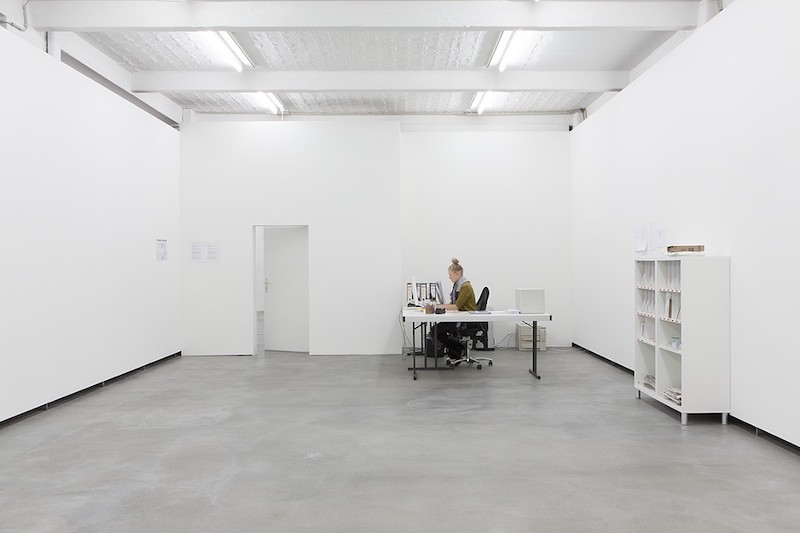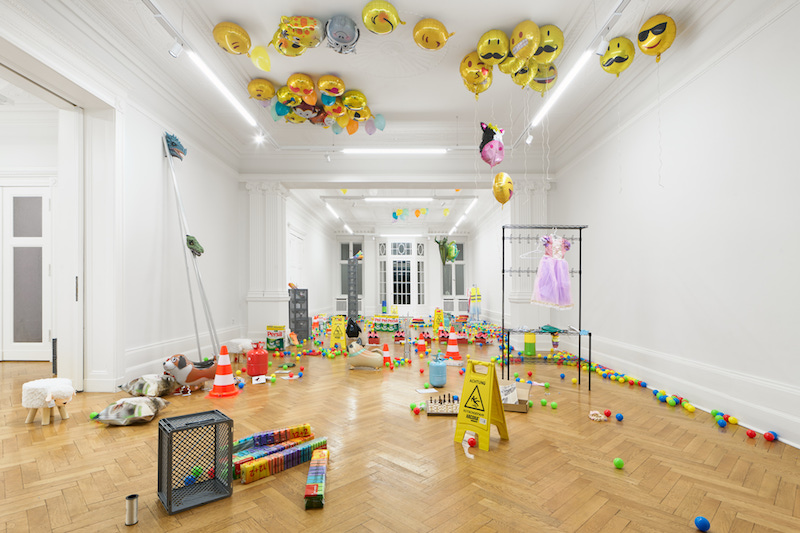by Alison Hugill // Mar. 7, 2023
The abstract value of art—its unspeakable quality—often mirrors the abstract value of money. While both are capable of taking a concrete or object form, they are conceptually prone to ephemerality and their existence relies heavily on speculation. As researcher Marina Vishmidt puts it: “contemporary capital and contemporary art…come to constitute the poles of a society structured around speculation.” One of the main tenets of art’s intrinsic value, as described by Vishmidt, is its ability to “conceal the labour that went into it, “ setting itself apart from the less valuable designations of craft or handiwork. Similarly, the so-called “sharing economy” in which we find ourselves (ruled by apps like Uber and AirBnb) has taken this idea to an extreme: labour has now become so abstract as to be reconfigured in terms of “sharing” one’s spare time or space. Subjective qualities regularly applied in the art world—like creativity, flexibility and innovation—are fully entrenched as buzzwords in the neoliberal workforce.
There are clear structural reasons why money and art go hand-in-hand. In 2019, a study emerged from US census data going back as far as 1850, which claimed that “creative occupations” are more likely to be dominated by those who come from wealthy families. Generational wealth was a major factor in one’s ability to become an artist, and underlying issues such as racism and classism formed clear barriers to success. Having independent access to money, it would seem, is paramount to survival in the art world. While this is entirely unsurprising, considering the insidious nature of capitalism and white supremacy across all markets, it is a fact that deserves further interrogation.

Joshua Schwebel: ‘Subsidy,’ 2015 // Photo Sandy Volz, courtesy the artist
And this is precisely what Berlin-based artist Joshua Schwebel does in his practice. He questions the ways in which the art market and its institutions frame art “as a construct that both confers and protects value.” His work takes aim at hierarchies present in art institutions and the effects of austerity politics on cultural funding, which solidify art’s dependence on donors and “establish the already-wealthy as the arbiters of taste and legitimacy in art.” In Cristina Ramos’ upcoming interview with Schwebel, these topics will be addressed through conversation about some of his pieces, like his 2015 intervention ‘Subsidy,’ which took place during his year-long residency at Künstlerhaus Bethanien and in which he redirected his exhibition budget to pay the seven (otherwise unpaid) interns working during his time there.

Darren Bader: ‘fünfdreier,’ Société, Berlin, 2023 // Courtesy of Société Berlin
In another contribution to the Money topic, Dagmara Genda will speak with artist Darren Bader about his current exhibition ‘fünfdreier’ at Société Berlin. Through works that include gestures like selling money, Bader pokes fun at how value is ascribed to objects and how they become defined as art, claiming that “contemporary art is by its very nature kind of a tenuous proposition and category.” In his current exhibition, Bader presents an “instruction-based” sculpture, entitled ‘Amazon.com sculpture,’ in which he instructs the owner to buy a number of “things” from amazon.com, which are then organized according to the owner’s mood, but should be “regarded rather than used.” The particular iteration on show was purchased by Société’s staff and the objects are destined to return to their status of everyday items after the show ends on March 19th.
William Kherbek will consider the work of Greco-Belgian artist Danai Anesiadou, who is known for exhibiting her belongings in vacuum-packed or resin-sealed sculptures, as in her current show ‘D POSSESSIONS’ at Wiels in Brussels. Anesiadou once encased a kilo of gold in plastic for a piece exhibited at Documenta 14, so as to question the inherent value of money in its “object form.”
While art’s relationship to money is no secret—the art market is alive and well, as is the neoliberal cooptation of all things “creative”—many artists are choosing to devote their practices to critiquing the underlying structures that uphold art’s dependency on capital. By using money (or the raw goods and services it buys) as the material in their work, they put into perspective the extent to which the market (all markets) relies on abstraction and speculation. But what recourse does art have to change its own place in global capitalism, beyond gesturing to the absurdity inherent in how artworks are conferred monetary value? Through an exploration of this topic, we aim to open conversations around the ways in which money forms the backbone of the art world ecosystem—beyond the worn archetypes of wealthy patrons and struggling artists—both as a nebulous dictator and a curious subject matter.




















